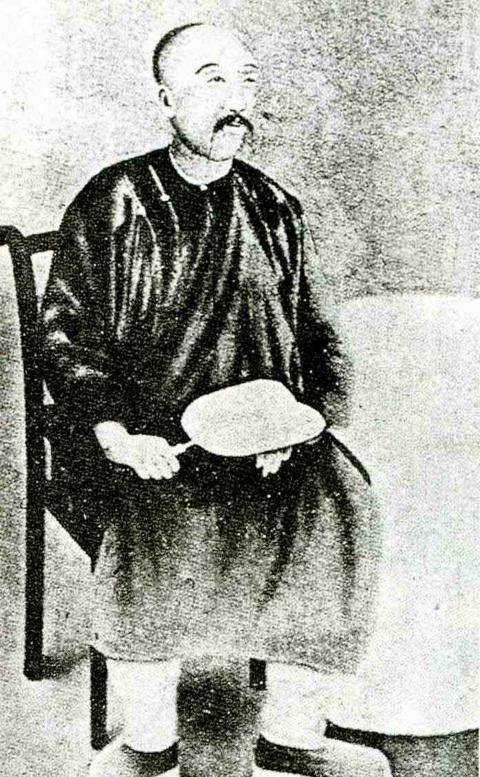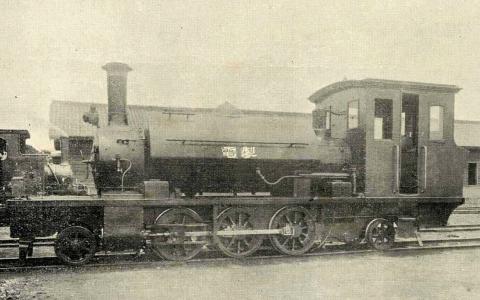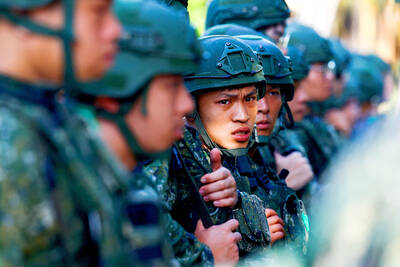Aug. 14 to Aug. 20
On Aug. 15, 1978, the first Tzechiang-class express train (自強號) made its official maiden voyage, traversing the newly electrified route between Taipei and Taichung. It was a British EMU100 train, a model that was used by the Taiwan Railway Company until June 2009.
It was a major milestone in Taiwan’s railroad history, which stretches back to the construction of the first railroad in 1887 under the supervision of the Qing Empire’s governor of Taiwan, Liu Ming-chuan (劉銘傳). Liu is often considered the “father of Taiwan’s railways,” but a quick Google search will reveal that there is another contender for the title — Japanese national Hasegawa Kinsuke, who was the chief engineer behind the completion of the Taiwan Trunk Line (縱貫線) in 1908, which connected Kirun (Keelung) and Takao (Kaohsiung).

Photo courtesy of Wikimedia Commons
Liu was Taiwan’s first governor when the Qing decided to separate it from Fujian Province in 1885. Long considered a backwater province, the Qing only began to take an interest in developing Taiwan in the latter half of the 19th century.
The idea of building a railroad in Taiwan was first proposed in 1877 by Fujian governor Ting Jih-chang (丁日昌), who saw Taiwan as a key defensive location — but it never materialized due to technical and financial issues.
Liu officially submitted a requested to the imperial court in April 1887 to build a north-south railroad. The court approved it a month later. Liu quickly set up the government-run Taiwan Railway Business Administration (全台鐵路商務總局) and recruited British and German engineers. Construction reportedly began June 9, the birthday of George Stephenson, who built the first public railway in the world — some dispute this claim, but the date is still officially observed as the anniversary of Taiwan’s railroad.

Photo courtesy of Wikimedia Commons
The first tunnel, from Taipei to Keelung, took about three years and resulted in many deaths and accidents. Upon its completion, Liu wrote a couplet which ended with “human power triumphs over God’s work” (居然人力勝神工). The first car made a test journey from Dadaocheng (大稻埕) to Xikou (錫口, today’s Songshan District, 松山) area in July 1888, drawing thousands of spectators.
Qing era railway construction ended in Hsinchu in 1894. Liu had left his post three years earlier, and his successor Shao Yu-lien (邵友濂) stopped most of Liu’s modernization programs soon after.
THE JAPANESE EFFORT

Photo courtesy of Wikimedia Commons
A year later, the Qing ceded Taiwan to Japan. Historian Tai Pao-tsun (戴寶村) writes in the book Around the Island: The History of Taiwan’s Railway (縱貫環島:台灣鐵道) that the railroad was already in pretty bad shape when the Japanese took over and the situation was exacerbated when the retreating Qing troops sabotaged the tracks and facilities.
By July 1895, the Japanese had restored the entire railroad to working condition, using it to transport supplies in their campaign south against local resistance. Tai finds it ironic that the railroad, which was built to protect Taiwan, ended up being used by the invaders against the local population.
In the first few years, the Japanese uprooted sections of the old railroad, even abandoning the Taipei-Keelung tunnel and building a new one that was easier to traverse.
In 1899, construction began to extend the railroad further south, employing Japanese engineers and cheap Taiwanese labor. Books on Taiwanese history barely mention Hasegawa, who began his railroad career as a technician in 1877 and arrived in Taiwan in 1899 as the project’s chief engineer.
Shinpei Goto, minister of civilian affairs, wrote later in an official railroad publication, “I was the head of the railway project in name only. In fact, everything related to railroad construction was taken care of by Hasegawa. All I did was stamp paperwork.”
Hasegawa deemed the original Qing Dynasty line too steep and planned a new line south from Taihoku (Taipei). At the same time, he ordered construction to start north from Takao (Kaohsiung). During this time, he also helped build stations, branch lines (such as one to Tamsui) and connections to various ports.
The two construction camps finally met in the middle on April 20, 1908, and Hasegawa left Taiwan shortly after, having completed Liu’s vision 20 years later. A statue of Hasegawa stood in front of then-Taihoku Station from 1910 until the end of Japanese rule.
Taiwan in Time, a column about Taiwan’s history that is published every Sunday, spotlights important or interesting events around the nation that have anniversaries this week.

Many people noticed the flood of pro-China propaganda across a number of venues in recent weeks that looks like a coordinated assault on US Taiwan policy. It does look like an effort intended to influence the US before the meeting between US President Donald Trump and Chinese dictator Xi Jinping (習近平) over the weekend. Jennifer Kavanagh’s piece in the New York Times in September appears to be the opening strike of the current campaign. She followed up last week in the Lowy Interpreter, blaming the US for causing the PRC to escalate in the Philippines and Taiwan, saying that as

Nov. 3 to Nov. 9 In 1925, 18-year-old Huang Chin-chuan (黃金川) penned the following words: “When will the day of women’s equal rights arrive, so that my talents won’t drift away in the eastern stream?” These were the closing lines to her poem “Female Student” (女學生), which expressed her unwillingness to be confined to traditional female roles and her desire to study and explore the world. Born to a wealthy family on Nov. 5, 1907, Huang was able to study in Japan — a rare privilege for women in her time — and even made a name for herself in the

Would you eat lab-grown chocolate? I requested a sample from California Cultured, a Sacramento-based company. Its chocolate, not yet commercially available, is made with techniques that have previously been used to synthesize other bioactive products like certain plant-derived pharmaceuticals for commercial sale. A few days later, it arrives. The morsel, barely bigger than a coffee bean, is supposed to be the flavor equivalent of a 70 percent to 80 percent dark chocolate. I tear open its sealed packet and a chocolatey aroma escapes — so far, so good. I pop it in my mouth. Slightly waxy and distinctly bitter, it boasts those bright,

“Taiwanese increasingly reluctant to give their lives to defend the island,” trumpeted a South China Morning Post (SCMP) headline last week. The survey asked whether people should be prepared to pay any price — including death — to protect Taiwan and prevent “reunification.” “The poll found that 52.2 percent of those questioned were unwilling to do so — an 8.4-point rise compared with a similar survey carried out two years ago — while 40.8 percent were willing, down four points on the previous survey,” the article said. Treated as anti-Taiwan propaganda, the piece was sent around by the usual pro-China suspects